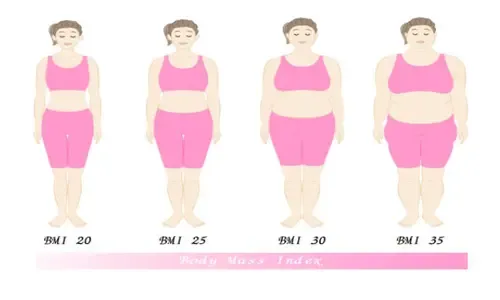Understanding BMI
BMI stands for Body Mass Index, a measure of body fat based on height and weight. It's an easy and convenient way to check if you're in a healthy weight range. A BMI between 18.5 and 24.9 is considered healthy. However, the ideal BMI range may vary depending on your age, gender, and ethnicity.
Ideal BMI Range by Age
As we age, our body composition changes, and so does the ideal BMI range. Here's a breakdown of the ideal BMI range by age group:
- Children (ages 2 to 19): A BMI-for-age percentile between the 5th and 85th percentile is considered healthy.
- Adults (ages 20 and older): A BMI between 18.5 and 24.9 is considered healthy.
Ideal BMI Range by Gender
Men and women have different body compositions, which affect their ideal BMI range. Here's a breakdown of the ideal BMI range by gender:
- Men: A BMI between 18.5 and 24.9 is considered healthy.
- Women: A BMI between 18.5 and 24.9 is considered healthy.
Ideal BMI Range by Ethnicity
Ethnicity can also play a role in determining the ideal BMI range. Some ethnic groups tend to have a higher body fat percentage, which affects their ideal BMI range. Here's a breakdown of the ideal BMI range by ethnicity:
- Asians: A BMI between 18.5 and 23 is considered healthy.
- Caucasians: A BMI between 18.5 and 24.9 is considered healthy.
- African Americans: A BMI between 18.5 and 25 is considered healthy.
The Importance of Waist Size
Waist size is another important factor in determining your overall health. Excess fat around the waistline is a risk factor for several health conditions, including heart disease, diabetes, and stroke.
Ideal Waist Size by Gender
Men and women have different ideal waist sizes due to differences in body composition. Here's a breakdown of the ideal waist size by gender:
- Men: A waist circumference of less than 40 inches is considered healthy.
- Women: A waist circumference of less than 35 inches is considered healthy.
Ideal Waist Size by Ethnicity
Ethnicity can also affect the ideal waist size. Some ethnic groups tend to have a higher risk of health conditions related to excess belly fat. Here's a breakdown of the ideal waist size by ethnicity:
- Asians: A waist circumference of less than 31.5 inches is considered healthy.
- Caucasians: A waist circumference of less than 35 inches is considered healthy.
- African Americans: A waist circumference of less than 37 inches is considered healthy.
Risks of Excess Body Fat
Excess body fat is a risk factor for several health conditions, including heart disease, diabetes, and stroke. It can also increase the risk of certain types of cancer, such as breast, colon, and prostate cancer.
BMI and Health Risks
Studies have shown that maintaining a healthy BMI can significantly reduce the risk of chronic diseases. A BMI between 18.5 and 24.9 is associated with the lowest risk of chronic diseases. However, even a BMI within the normal range can increase the risk of certain health conditions if excess body fat is concentrated around the waistline.
Waist Size and Health Risks
Excess belly fat is a risk factor for several health conditions, including heart disease, diabetes, and stroke. A waist circumference above the ideal range can increase the risk of these conditions.
How to Achieve a Healthy BMI and Waist Size
Maintaining a healthy BMI and waist size is crucial for overall health. Here are some tips on how to achieve a healthy BMI and waist size:
Exercise Regularly
Regular exercise can help you maintain a healthy BMI and waist size. Aim for at least 150 minutes of moderate-intensity exercise or 75 minutes of vigorous-intensity exercise per week.
Eat a Balanced diet.
Eating a balanced diet that's low in saturated fat and high in fiber can help you maintain a healthy BMI and waist size. Aim for a diet that's rich in fruits, vegetables, whole grains, and lean protein sources.
Avoid Sugary drinks.
Sugary drinks can contribute to excess body fat, especially around the waistline. Choose water, unsweetened tea, or coffee instead.
Get Enough sleep.
Lack of sleep can disrupt hormones that regulate appetite and metabolism, leading to weight gain. Aim for at least 7–8 hours of sleep per night.
Conclusion
Maintaining a healthy BMI and waist size is crucial for overall health. A BMI between 18.5 and 24.9 and a waist circumference below the ideal range can significantly reduce the risk of chronic diseases. Regular exercise, a balanced diet, and adequate sleep can help you achieve a healthy BMI and waist size. By making these lifestyle changes, you can improve your overall health and quality of life.

